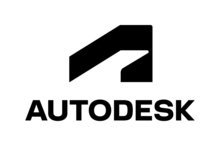Exploring human-robot collaboration in industrialized construction assembly production by using computer vision algorithms
Research Team


Our Motivation:
"Following numerous visits to factories engaged in industrialized construction, we witnessed a multitude of repeatable manual tasks within assembly processes. This observation underscores the imperative need to comprehensively understand off-site production, in order to evaluate the most efficient approach: whether it be manual work, fully automated processes, or a collaboration between humans and robots"
Research Contribution
This research delineates the motivations of industrialized construction firms for adopting advanced automation in their production processes.
It aims to devise a methodology that leverages video data and computer vision algorithms to discern work activities, pinpoint production bottlenecks, and identify opportunities for implementing an optimal level of human-robot collaboration.
Additionally, a set of metrics will be defined to assess the impact of human-robot collaboration on the assembly processes of prefabricated parts.
Ultimately, this research lays the groundwork for determining the feasibility of enhancing the prefabrication production process through elevated levels of automation.

Problem
Practical Problem
The construction industry is increasingly embracing the concept of industrialized construction for new projects, leveraging off-site production to enhance quality, reduce cycle times, and minimize environmental impact.
This shift opens up a myriad of opportunities for implementing higher levels of automation.
However, we have noticed that many companies transition their production processes from on-site to off-site without reevaluating their manufacturing strategies, resulting in production lines that remain heavily manual and labor-intensive.
As such, a more thorough qualitative and quantitative analysis of the production process is essential to attain higher quality and productivity objectives.
Solution
A methodology utilizing camera data and computer vision algorithms is proposed to evaluate workflows in an industrialized construction company, with the aim of understanding the motivations and potential implementations of human-robot collaboration.
The computer vision algorithm is deployed at a single workstation to capture work steps and production performance data, such as productivity, quality, and ergonomics. Work steps identified with high ergonomic risks and stringent quality requirements are pinpointed as target work steps that human-robot collaboration workflows can optimize.
Additionally, for future work, a human-robot collaboration workflow should be designed and evaluated for the workstation to diminish ergonomic risks while preserving high quality and productivity.
The newly developed workflow could be simulated in a virtual environment and assessed based on performance metrics, which are then compared with the manual workflow. This study investigates the technical feasibility of implementing a human-robot collaboration workflow in industrialized construction production facilities.
Added Value For The Industry
This methodology has the potential to be a foundational tool for industrialized construction companies, enabling them to systematically assess the impact of implementing human-robot collaboration without disrupting existing production processes.
Once operationalized, this approach could empower designers, builders, manufacturers, and owners to pinpoint opportunities to optimize and automate the production process.
Furthermore, this study lays the groundwork for industrialized construction firms to push the boundaries of constructability, leveraging the advanced capabilities of human-robot collaboration workflows to ultimately enhance the safety, productivity, cost, and quality of projects.
Cooperation Partner

Timeline
| Date | Activity | Outcome |
Year 2022 | Research became awarded: Exploring human-robot collaboration in industrialized construction production by using computer vision algorithms |
|
Milestone 1 Month 1-6 |
| After initial interviews and factory visits, we are building a platform for deploying computer vision algorithms for real-time streaming analysis. |
Milestone 2 Month 3-8 |
| We are trying to obtain production images and videos for computer vision based analysis and production data extraction. |
Milestone 3 Month 1-8 |
| A platform is built to deploy computer vision algorithms and analyze production video streaming data. |
Milestone 4 Month 8-12 |
| Looking to participate with companies that are interested in deploying human-robot collaboration in production. A poster was created. |
Project Summary
(Provides you with a brief and clear summary of the insights and outcomes at the end of the funded year.)
This research delineates the motivations of industrialized construction firms for adopting advanced automation in their production processes.
It aims to devise a methodology that leverages video data and computer vision algorithms to discern work activities, pinpoint production bottlenecks, and identify opportunities for implementing an optimal level of human-robot collaboration.
For future work, a human-robot collaboration workflow should be designed and evaluated for the identified critical workstation to diminish ergonomic risks while preserving high quality and productivity. The newly developed workflow could be simulated in a virtual environment and assessed based on performance metrics, which are then compared with the manual workflow.
This study investigates the technical feasibility of implementing a human-robot collaboration workflow in industrialized construction production facilities.
